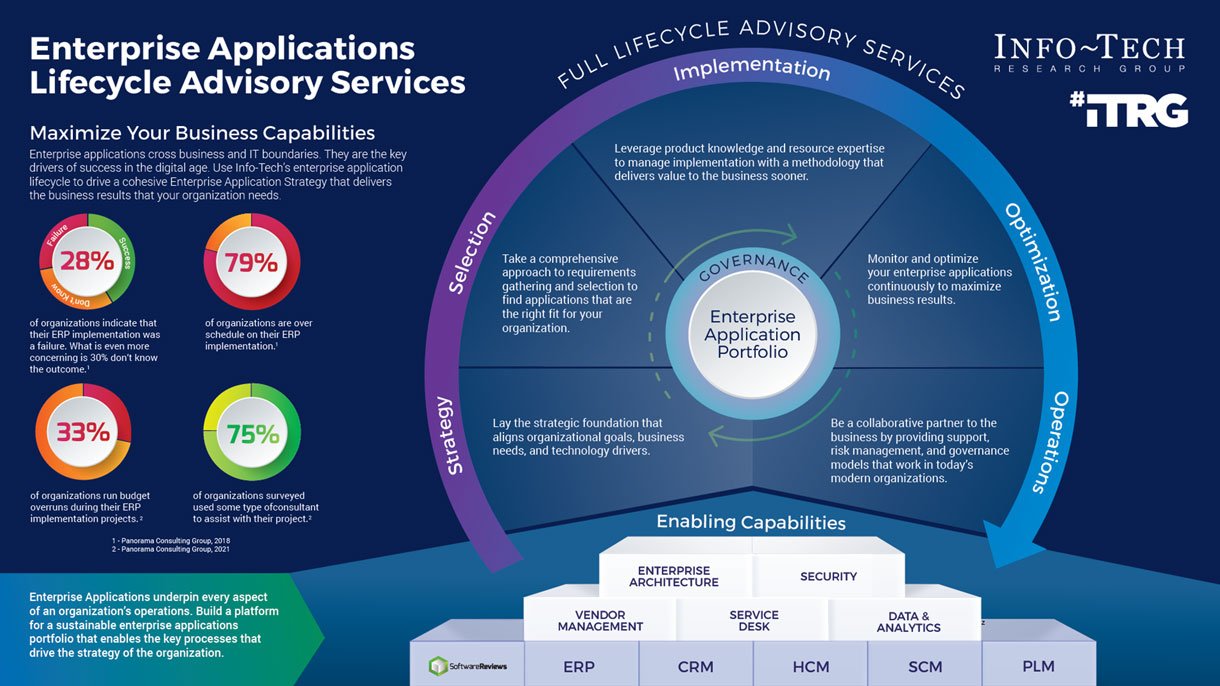Tech
Enterprise Quality Framework: Advanced Implementation Strategies

Ensuring top-notch quality is crucial for businesses, especially those keeping up with new technologies. The Enterprise Quality Framework (EQF) offers a structured way for companies to maintain top-notch quality assurance in all their operations, projects, and departments.
As businesses aim for scalability, efficiency, and innovation, having a robust EQF is key to aligning quality standards with business objectives. The EQF involves various methods, tools, and tactics to enhance operational processes, product quality, and customer satisfaction. Test scenarios are vital to this framework, ensuring systems and software function properly and reliably.
Implementing advanced strategies in EQF ensures practical, measurable enhancements in business performance rather than just theoretical benefits. This blog will explore these advanced strategies for implementing an EQF and how organizations can use quality assurance and test scenarios to optimize their processes for long-term success.
Understanding the Core Components of the Enterprise Quality Framework
An Enterprise Quality Framework (EQF) stands on principles that focus on consistency, accountability, and always getting better. It’s important to grasp its key parts to make this framework work well. These usually involve managing processes, setting quality standards, using models for continuous improvement, and following testing procedures. Process management is a crucial element of EQF. It means creating and standardizing workflows that match the organization’s goals and plans. Having clear processes helps all departments work in sync, reducing mistakes and inefficiencies.
On the other hand, quality standards set the bar for the quality an enterprise aims for. These standards come from industry norms and internal targets, helping decision-making. Another key part is the continuous improvement model, ensuring that quality isn’t a one-time thing but an ongoing effort. By always upgrading processes, companies can stay ahead. Testing protocols, like setting up test scenarios, are also part of this framework. They let businesses mimic real-world situations to check if their systems meet the quality standards they’ve set.
Advanced Strategies for Implementing Quality Assurance
Quality assurance (QA) is important in ensuring things work well. In the big picture of how things are done, traditional QA methods focus on finding problems after they happen. But now, smarter ways are about stopping problems before they start by planning, training, and using tools that work independently.
One great way to make QA better is to use automatic testing. This means that machines run different tests to check if everything works okay. This ensures that the system does what it should in all situations. It also makes the testing faster and more accurate, which means fewer mistakes.
Continuous integration (CI) and continuous delivery (CD) are new ways of doing things that have made QA even better. With CI/CD, developers can keep checking their code at every step of making it. This helps find mistakes early, speed up how quickly things are done, and ensure the final product is good.
Another unique way to do QA is called shift-left testing. This means testing things much earlier so problems are immediately found and fixed. Using these smart QA strategies, companies can ensure their products are top-notch, come out faster, and make customers happy.
The Role of Test Scenarios in Enterprise Quality Frameworks
Test scenarios play a crucial role in a successful Enterprise Quality Framework. These scenarios are like detailed stories created to mimic how different people interact with a system, ensuring all its functions work correctly. They help companies spot problems early during development and reduce risks before launching the product.
The main job of test scenarios is to check if the software or system functions well. These scenarios cover many different situations to see if the system meets its requirements, like user logins, handling information, and managing errors. Each scenario acts like a real-life situation, showing how the system copes under different pressures. Besides checking for functionality, test scenarios look into performance, security, and the aspects of using the system.
For example, load testing determines whether the system can sustain many users simultaneously, security tests seek vulnerabilities that can cause breaches, and usability tests check if the system is user-friendly. By examining all these areas, test scenarios help businesses make sure their products are strong and dependable.
Implementing Continuous Improvement within an Enterprise Quality Framework
Continuous improvement is a really important part of the Enterprise Quality Framework. It means businesses should always try to improve and develop new ideas. To make continuous improvement work well, companies should encourage feedback, use data to make decisions and work together as a team. One good way to help with continuous improvement is to have regular performance reviews.
These reviews look at how well things work and find ways to improve them. They can use key performance indicators, customer feedback, and test results to see what needs improving. Another helpful strategy is root cause analysis, which means figuring out why things go wrong or don’t work well. By fixing the main reasons for problems, businesses can stop them from happening again and find long-term solutions.
This is good for improving quality assurance processes. Also, when teams work together and share ideas, it helps improvements happen all over the company. Teams from different areas should collaborate to improve processes and learn from each other. Continuous improvement in an EQF helps companies be flexible, ready for change, and able to meet what customers want.
Leveraging LambdaTest for Enhancing Enterprise Quality Frameworks
LambdaTest is a AI-powered testing platform designed to simplify and improve software testing. By enabling seamless cross-browser and cross-device testing without the need for physical labs, LambdaTest ensures websites and apps perform consistently across various environments.
A standout feature of LambdaTest is its support for automated testing using popular tools like Selenium, allowing for faster test execution with reduced manual effort. This significantly accelerates the testing cycle and improves overall efficiency.
LambdaTest also provides real-time debugging capabilities, enabling developers and testers to identify and resolve issues quickly. This focus on efficient problem-solving helps maintain high-quality standards in software.
Additionally, LambdaTest supports scalability and adapts to modern testing methodologies, making it a valuable solution for organizations looking to streamline and optimize their testing workflows.
Leveraging Automation to Scale Enterprise Quality Frameworks
As businesses grow, handling quality assurance gets more complicated. They need to use automation to maintain high standards as the company expands. Automation in an Enterprise Quality Framework helps organizations make testing processes more efficient, reduce manual work, and work better.
Automating test scenarios is one common way to use automation in an EQF. Automated tools let companies test hundreds or thousands of user interactions quickly, covering different features and cases thoroughly. This speeds up testing and lets teams focus on other important tasks.
Automation can also be used in making software, from checking the code to putting it out. When quality checks are automated early on, issues can be caught before they become big problems. This proactive approach ensures the final product meets quality standards, leading to quicker releases and happier customers.
Automating quality assurance also makes things more consistent and lowers the chance of human mistakes, which is crucial for big projects. As businesses grow, scaling quality assurance with automation becomes very important.
Key Challenges in Implementing an Enterprise Quality Framework
Utilizing an Enterprise Quality Framework (EQF) can be problematic for an organization. One significant issue they often face is resistance from employees accustomed to the current procedures. It can be difficult for them to adapt to a more structured quality framework.
To overcome this obstacle, effective communication, strong leadership, and training initiatives are crucial to demonstrate the advantages of the new approach. Another significant challenge lies in ensuring that the tools used are compatible.
Investing in tools that integrate well with existing systems is essential to prevent inefficiencies. Lastly, a shortage of resources can impede progress. Providing teams with appropriate technology and expertise is vital for the successful implementation of an EQF.
Best Practices for Effective Test Scenario Development
Following best practices when creating test scenarios for an Enterprise Quality Framework ensures comprehensive and effective testing. Here are some key strategies to enhance test scenario development:
- Define Clear Objectives: Each test scenario should have a clear purpose, whether it’s to validate functionality, performance, security, or user experience. Clear objectives help focus the test efforts and ensure that each scenario addresses specific requirements or potential issues.
- Use Realistic Data: Inculcate data representative of real-life conditions to increase the reliability of the tests. Realistic data can reveal issues that would not appear in synthetic or overly simplified data sets, hence a better understanding of how the system would perform in real use cases.
- Account for Edge Cases: Do not just focus on typical use cases but also include scenarios that test the system’s behavior under extreme or unexpected conditions. Testing edge cases ensures the system is robust and can handle unexpected situations without failing, thus improving its overall resilience.
- Keep Scenarios Simple and Focused: Design test scenarios simple and understandable. Complex scenarios can cause misinformation misinterpretation, and thereby neglect obvious defects. Simple and focused scenarios clearly describe problems that can be found and reasoned regarding the test.
- Provide full coverage: Ensure that your test scenarios adequately cover a lot of functionalities and interactions within the system. Comprehensive coverage gives little room for defects slipping through the cracks. It, therefore, enhances the guarantee that different aspects of a system are of the expected quality.
- Prioritize Based on Risk: Focus on the most critical and high-risk areas. Prioritizing test scenarios according to the potential impact on the business helps manage the resources in all the areas that could cause the most significant issues if they fail.
- Incorporate Feedback Loops: Test scenarios are updated and refined regularly based on feedback from previous tests and changes in the system requirements. A feedback loop ensures that the test scenarios remain relevant and effective, adapting to the project’s evolving needs.
- Automate Where Possible: Use automated testing tools for running repetitive scenarios. Automation will save time and reduce manual errors while allowing test scenarios to be executed consistently and more efficiently. It enhances the overall testing process and frees human resources for the more complex testing tasks.
Following these best practices, the organization can develop the right test scenario that identifies problems well and confirms that the system meets functional and performance expectations.
Conclusion
Integrating an Enterprise Quality Framework with advanced implementation strategies is crucial for businesses to keep up with changing customer needs and uphold top-notch standards. Companies can cultivate a culture of excellence by focusing on proactive quality assurance practices, crafting efficient test scenarios, and embracing ongoing enhancement. Incorporating automation also helps streamline operations and ensures reliable, scalable outcomes. These approaches help businesses stay competitive by delivering exceptional products and services that bring joy to customers and pave the way for lasting prosperity.
For More Information Visit Coopermagazine
-

 Celebrity1 year ago
Celebrity1 year agoWho Is Jennifer Rauchet?: All You Need To Know About Pete Hegseth’s Wife
-

 Celebrity1 year ago
Celebrity1 year agoWho Is Mindy Jennings?: All You Need To Know About Ken Jennings Wife
-

 Celebrity1 year ago
Celebrity1 year agoWho Is Enrica Cenzatti?: The Untold Story of Andrea Bocelli’s Ex-Wife
-

 Celebrity1 year ago
Celebrity1 year agoWho Is Klarissa Munz: The Untold Story of Freddie Highmore’s Wife
















